
Farewell to Changi
(Above image – ‘Air Raids’ by Robert Harper, RCMS 103/3/12)
After 21 months I have come to the end of my role as project conservator for the Wellcome Trust funded project to conserve and digitise the Changi Archive or as it is now known, the Voices of Civilian Internment: WWII Singapore Archive.
The 4,633 leaves in the archive have been successfully conserved and digitised, and are comfortably housed in ten archival boxes and nine visifiles in the environmentally-monitored University Library stacks. Final preparations are underway for the launch of around 6,200 images of the archive on Cambridge Digital Library in August.
please click on images to enlarge them

(L-R) Before and after paper repair of the leaves from a diary, before and after paper repair to dust jacket of a book of memoirs

(L-R) The John Weekley papers housed in fascicules, B1 size boxes in the stacks containing the majority of the archive
The research bursary from the Wellcome Trust added a truly rewarding and instructive element to the project. Having time to explore analytical techniques and conduct research on the paper from one of the two camp Nominal Roll’s was enlightening and has broadened my experience of heritage science.
Collaboration with conservators and scientists from UCL and around the UK and Europe was essential to the success of the project and I am hopeful the relationships built will be of use in the future. The UV imaging equipment purchased by the bursary was not only essential in the analysis of the Nominal Roll but will be of use in the examination of many other items in the Library.
As a result of the research and experiments into conservation treatments, the Nominal Roll (RCMS 103/12/22/1) was successfully conserved. Repairs were made with the application of isinglass, as a vapour produced by aerosol generator, and archival tissue. The Roll is now able to be handled carefully and went safely through the digitisation process.
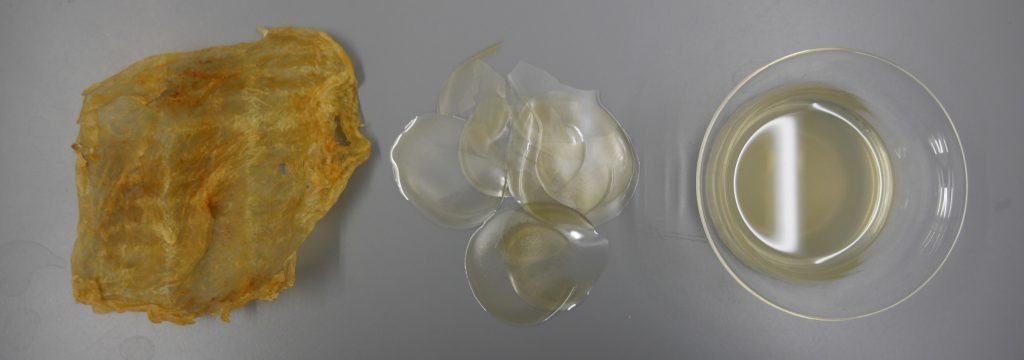
Dried sturgeon swim bladder (isinglass), isinglass adhesive in dried discs, isinglass made up with distilled water
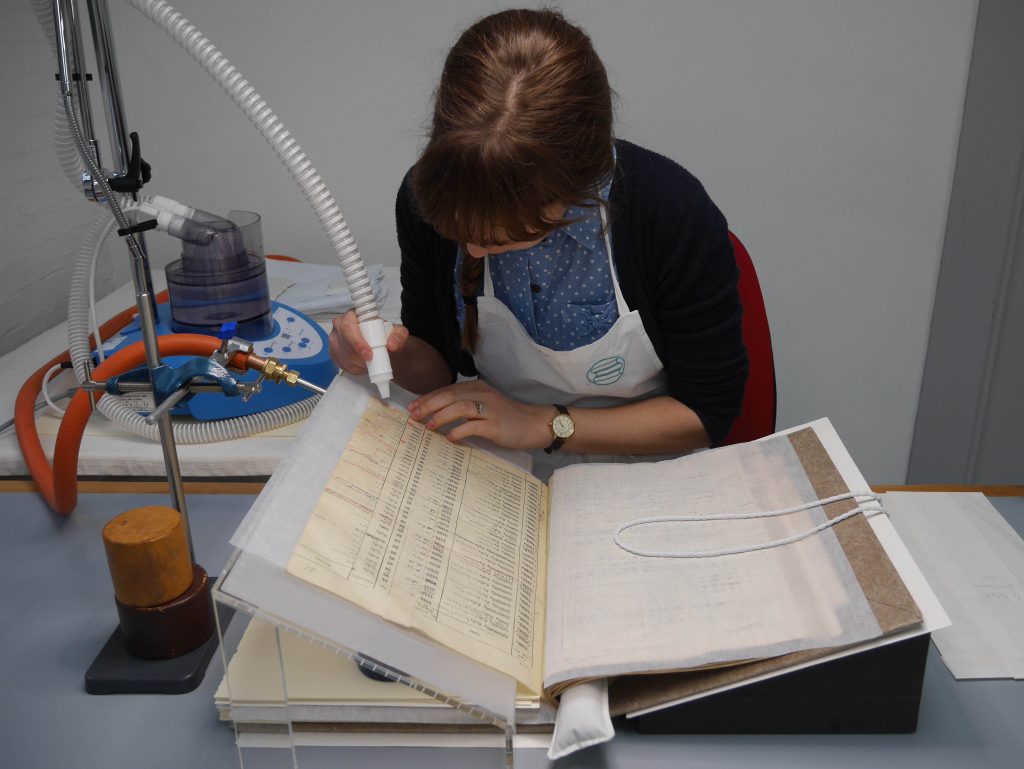
Conservator Emma Nichols using the aerosol generator to apply isinglass as an adhesive vapour to the Nominal Roll
Alongside my conservation and research work I have been involved with numerous outreach activities – seven blog-posts about the project have been published on Cambridge University Library’s Special Collections Blog; a half day event was organised for Cambridge University’s Science Festival which included a month-long exhibition in the Library entrance hall of key items from the archive; and multiple presentations have been written and given at meetings and conferences around the UK.
A short article about the project will be published in the Conservation and Preservation issue of the ARC Magazine in September 2017, and collaboration is underway with PhD Researcher Natalie Brown from UCL, with whom I conducted analysis of the Nominal Roll, to write a peer-reviewed article for the Institute of Conservation Journal.
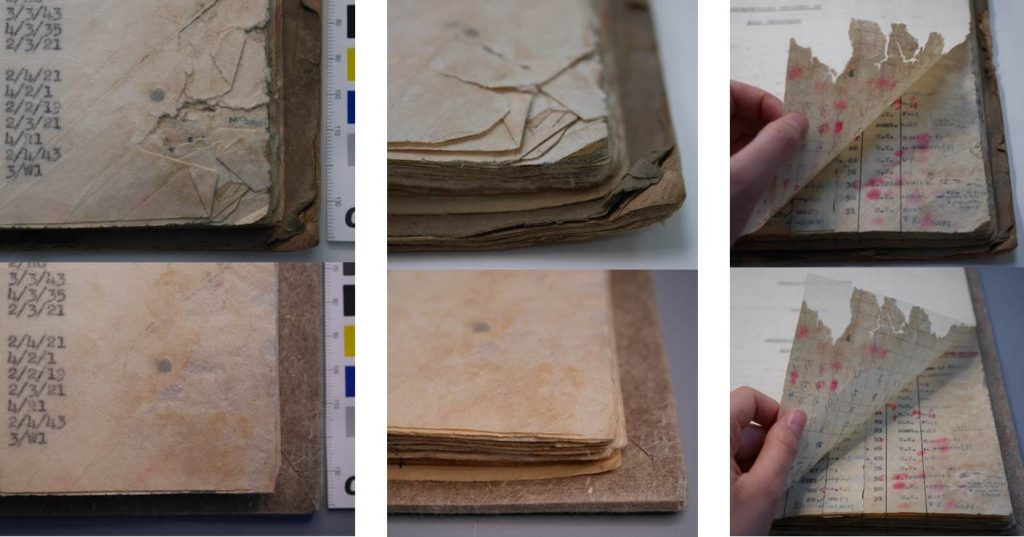
Top Row (L-R) – Nominal Roll before conservation. Bottom Row (L-R) – Nominal Roll after conservation
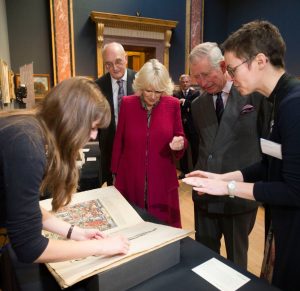
Meeting HRH Prince of Wales and HRH Duchess of Cornwall at Fitzwilliam Museum 200 Years anniversary event in November 2016
Visitors to the Library, including staff from Parliamentary Archives, The British Library, Bodleian Libraries, and many students, have enjoyed hearing about the project over the last two years. As a result of this, in November 2016 I was invited to the 200 year anniversary event at the Fitzwilliam Museum with other members of the CUL team where I met and spoke to HRH Prince of Wales and HRH Duchess of Cornwall about conservation.
The last few weeks have seen me writing up documentation and reports before my final day on the project on the 30th June. I have really enjoyed conserving the archive, the material proved challenging at times but I have found it very rewarding and I am excited to see the collection launched online in August. The research I was able to undertake on the Nominal Roll was fascinating and I am please we managed to arrange and partake in so many outreach events. It has been a privilege to work on this material over the last two years and I am sad to finish but pleased that this remarkable archive and the voices of the internees will continue to serve as a humbling reminder of human resilience.
With many thanks to
John Cardwell and Rachel Rowe – Royal Commonwealth Society, Cambridge University Library
Mary Hamilton French – NEDCC, USA
Natalie Brown, Katherine Curran and Matijia Strilic – Centre for Sustainable Heritage, UCL
Jim Bloxam, Deborah Farndell, Anna Johnson, and team – Conservation and Collection Care Department, Cambridge University Library
Scott Maloney and Maciej Pawlikowski – Digital Content Unit, Cambridge University Library
Suzanne Paul – Manuscripts Department, Cambridge University Library
Sue Crossley and Chris Hassan – Wellcome Trust
Alan Buchanan, Antoinette Curtis, Christopher Harvey, Richard Nichols, Andrea Pataki-Hundt and Manuela Reikow-Räuchle – External Conservators/Professionals, UK and Europe

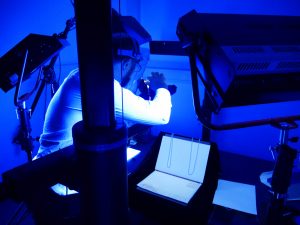
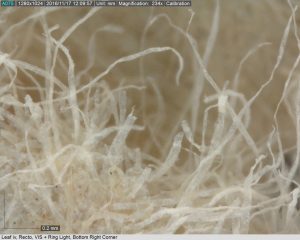
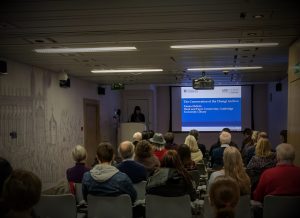

Re the Changi Project I read your article in ARC Magazine. A good friend was in Changi most of “his” war and kept sketch books etc. He has passed away but the books are safe and I have some photographs. His name was T G Howarth, head of Lepidoptera at the Natural History Museum for many years. He received Emperor Hirohito during his visit to the museum. I believe that some record of this would be a worthwhile addition to the Changi Project archive.
Dear Derek,
Many thanks for getting in touch. We have emailed you directly to explore how T G Howarth’s archives could be added to the digital library.